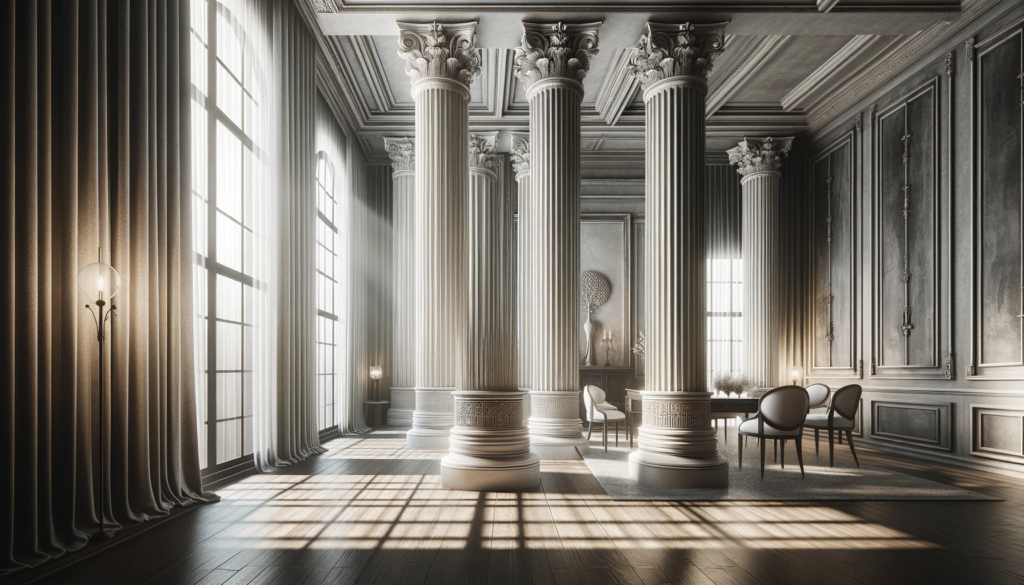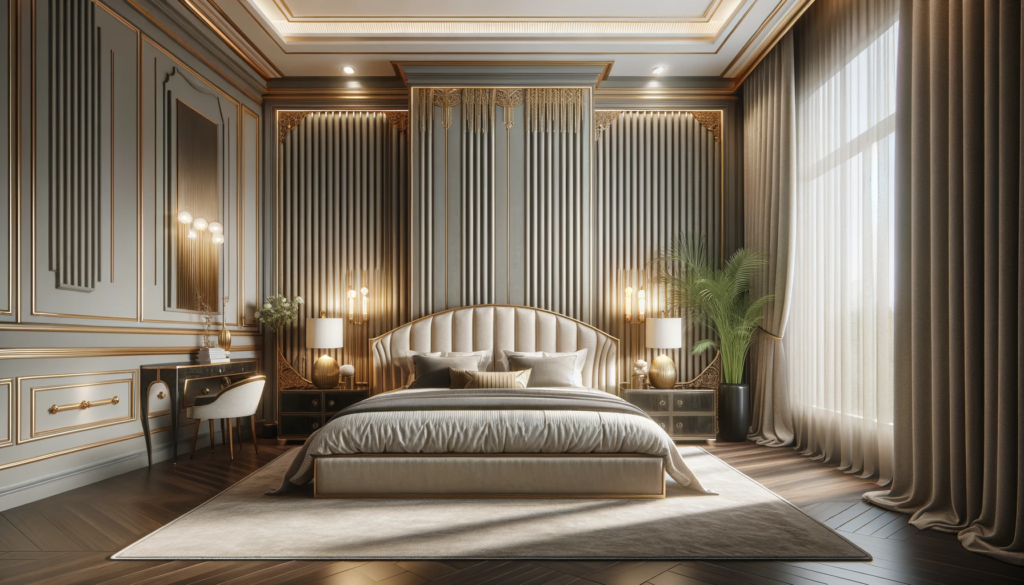In the dynamic world of interior design, the artful use of lines significantly shapes a space’s aesthetic and emotional appeal. Among these, vertical lines emerge as a formidable force, capable of transforming ordinary rooms into design masterpieces.
From historical insights to modern interpretations, we aim to provide seasoned designers and enthusiastic novices alike with the knowledge to harness the transformative power of vertical lines in their own spaces.
The Psychology of Vertical Lines in Design
Vertical lines bring a unique rhythm and flow to the dance of design elements, guiding the eye upwards and instilling a sense of height and grandeur. More than just structural necessities, these lines are deliberate strokes of artistic intent, speaking a language of elegance and strength.
They encapsulate a room’s essence, turning simple lines into narratives of beauty and sophistication. As silent yet profound communicators, they reshape our understanding of space, subtly directing the interplay of form and function.
They possess the power to transform a room from mundane to sublime, encouraging the observer’s gaze to explore new heights. This guide will delve into how strategically placed and integrated vertical lines can dramatically alter a room’s character, creating spaces that feel expansive and lofty, and weaving a visual story that captivates and inspires.

Historical Perspective
The use of vertical lines in interior design is a timeless principle, embraced across various epochs and cultures. These lines have historically symbolized power, luxury, and spirituality. They have stood as silent witnesses to the passage of time, reflecting the changing tastes and values of societies.
In each era, vertical lines have been reinterpreted to resonate with the contemporary ethos, yet their core symbolism remains untouched. From the ancient Greek columns to the soaring Gothic arches and the regal elegance of Renaissance Europe, verticality has been a consistent theme.
Even the modern Art Deco movement celebrated vertical lines, emphasizing progress and modernity with sleek, upward-reaching designs. This rich history not only highlights the enduring appeal and versatility of vertical lines in design but also illustrates their ability to adapt and stay relevant across different design philosophies and time periods.
Incorporating Vertical Lines in Modern Interior Design
In modern interior design, vertical lines have been rediscovered, blending classic elegance with contemporary boldness. These lines are not just aesthetic choices but strategic elements that draw attention to key architectural features in modern homes, like high ceilings, enhancing openness and fluidity. They serve as visual anchors, grounding the design while elevating its overall impact.
In commercial spaces, vertical lines create an impression of grandeur and efficiency, subtly guiding the viewer’s perception towards a sense of professionalism and sophistication. From sleek wood paneling to bold stripes in wall coverings, vertical lines infuse rooms with warmth, texture, and movement, seamlessly integrating form with function. They act as a bridge between traditional design principles and the evolving trends of the modern world, demonstrating how classic concepts can be reinvented to fit contemporary aesthetics and needs.

Practical Applications
Vertical lines offer varied and exciting practical applications in interior design, transcending mere aesthetics to become key functional elements. In living rooms, elements like floor-to-ceiling curtains not only add height and texture but also manipulate the perception of space, making rooms feel more grandiose and inviting.
Tall bookshelves serve dual purposes, creating visually appealing focal points while maximizing storage efficiency. In bedrooms, a tall headboard becomes more than just a piece of furniture; it transforms into a luxurious statement piece, enhancing the room’s elegance, while vertical lines in wallpaper or paneling elongate walls, altering the room’s dimensions visually.
In home offices, vertical elements like shelving not only enhance space but also promote organization and focus, a crucial aspect in work environments. In bathrooms, the application of vertical lines in tile work or through tall mirrors expands the space, adding a touch of sophistication.
These varied applications demonstrate the multifaceted role of vertical lines, illustrating that they are as functional as they are aesthetically pleasing, capable of reshaping the utility and beauty of a space in equal measure.
Color and Contrast
In painting new construction, where spaces are defined from the ground up, the use of vertical lines with thoughtful color choices becomes a crucial element of design. These lines, when combined with carefully selected hues, can transform walls into captivating focal points.
Alternating vertical stripes in contrasting hues or employing a gradient transition from dark to light shades adds depth and dimension, making the walls not just boundaries but active elements of the design narrative. This approach, especially potent in new constructions, paves the way for innovative and bold design integrations, breathing life into spaces.
Additionally, the inclusion of vertical lines in furnishings and decor isn’t just an aesthetic choice; it’s a strategic one. These elements should harmonize with the overall color scheme, ensuring a visually cohesive and stimulating environment.
This careful coordination underscores the importance of vertical lines in creating a balanced, engaging, and fluid space, illustrating how they can be used to both challenge and complement traditional design paradigms in new construction projects.

Lighting and Vertical Lines
Lighting is a key component in accentuating the impact of vertical lines in design, adding layers of depth and dimension to the overall aesthetic. The strategic placement of wall sconces or LED strip lighting along vertical features like columns doesn’t just illuminate these elements; it also accentuates their height and texture, creating a dramatic interplay of light and shadow.
Directional lighting, skillfully focused, can bring vertical artwork or architectural details like tall windows into the spotlight, enhancing their prominence and beauty. Furthermore, the inclusion of tall light fixtures not only complements the vertical theme but also reinforces the spatial dynamics of the room. Beyond artificial lighting, the role of natural light in interacting with vertical structures adds a unique, ever-evolving element to interior design.
As the day progresses, the changing angles and intensity of sunlight can transform the appearance and feel of a space, highlighting the vertical lines in a dance of light that shifts and plays, continuously redefining the ambiance. This dynamic interplay showcases how lighting, both natural and artificial, can be harnessed to elevate the presence of vertical lines, making them a living, breathing part of the design.
Conclusion
From their historical roots to modern applications, vertical lines do more than enhance aesthetic appeal; they alter perception, enhance functionality, and convey emotion. This guide has demonstrated that whether through new construction painting, the use of color and contrast, or the integration of lighting, vertical lines are an indispensable element in interior design. They lead to spaces that are visually striking and resonate with elegance and purpose.
Designers, homeowners, and enthusiasts are encouraged to embrace verticality in their projects and homes, unlocking a new dimension of design that elevates spaces from ordinary to extraordinary.